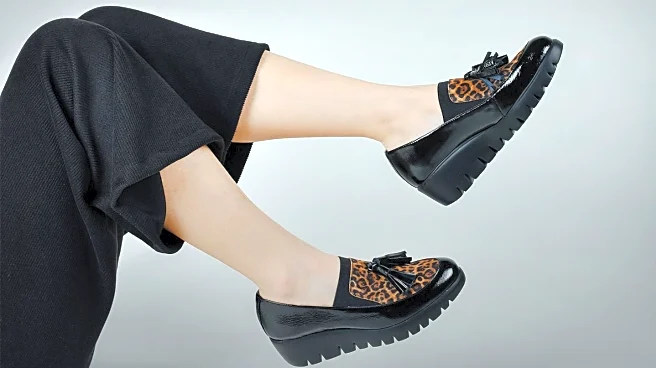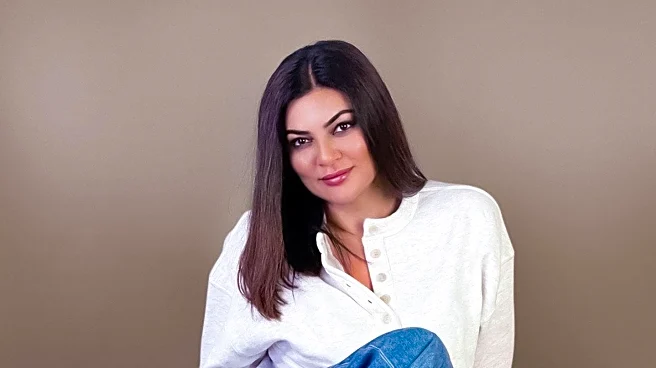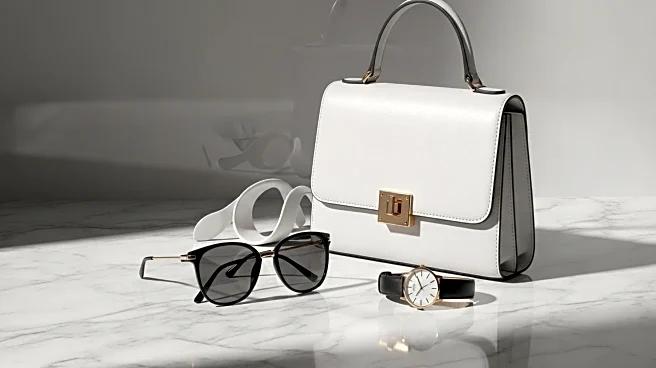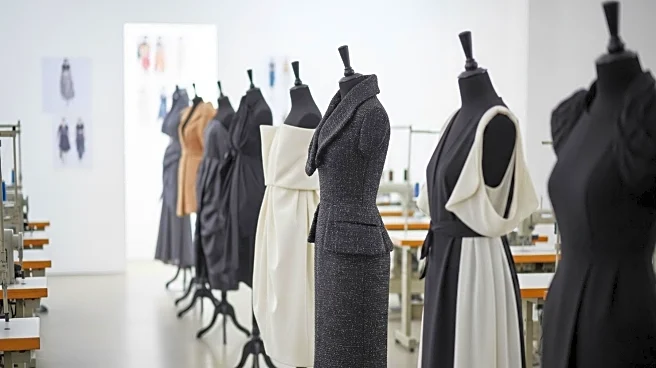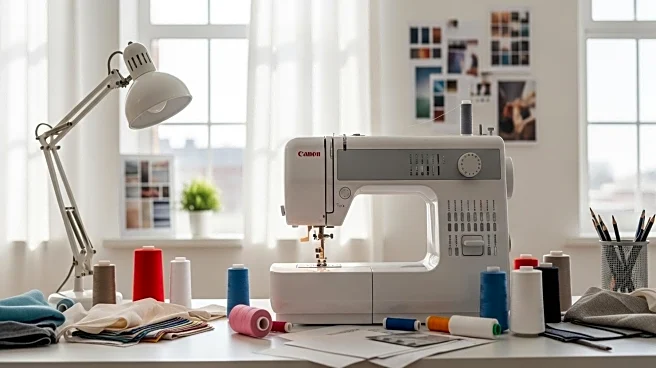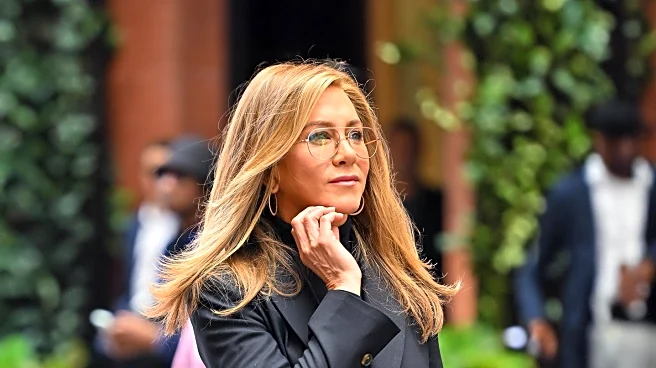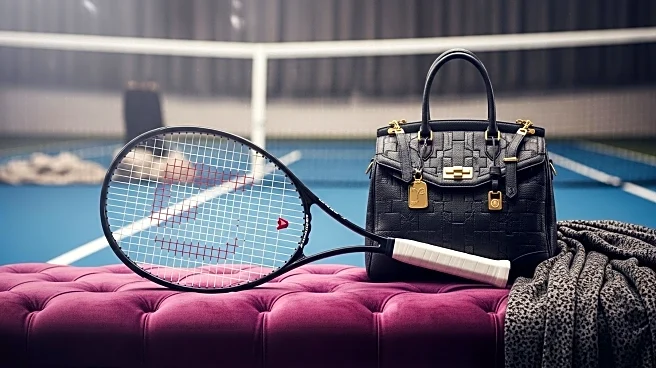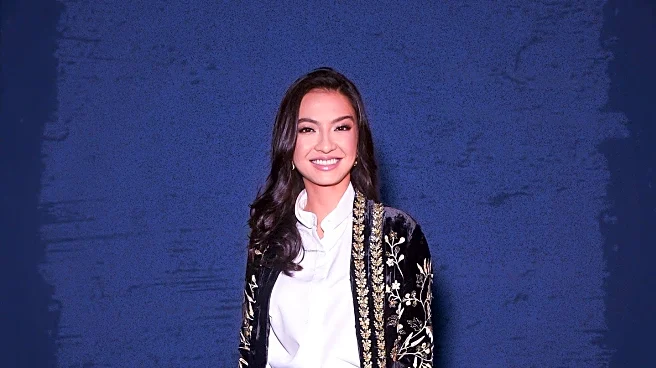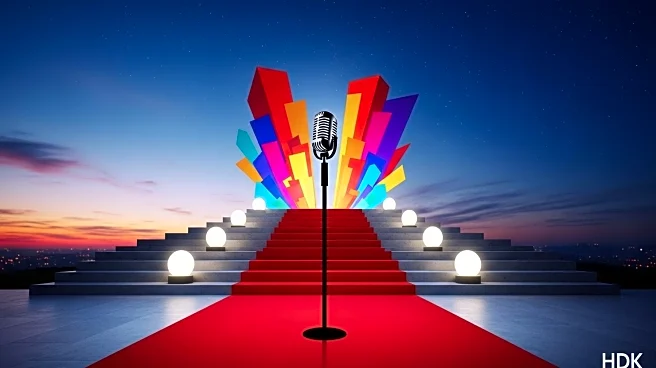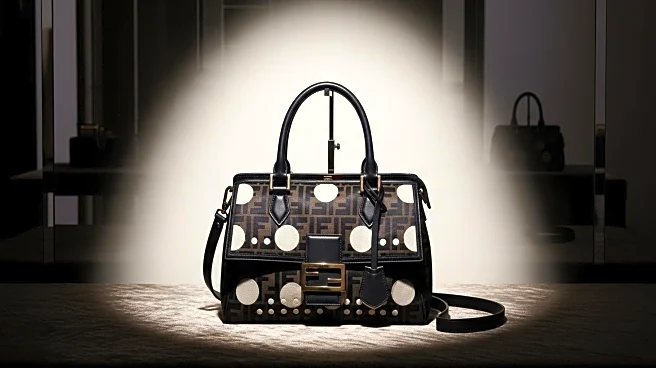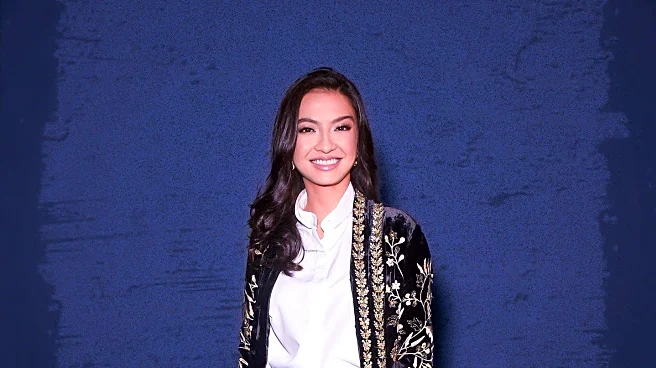What's Happening?
Lola Tung, a prominent Gen Z figure, recently showcased Marc Jacobs's Kiki Mary Jane flats at the U.S. Open, highlighting the growing trend of Mary Jane shoes for fall 2025. These shoes, known for their comfort and chic style, have been popularized by celebrities such as Sarah Jessica Parker and Katie Holmes. Tung's choice of footwear, paired with a stylish outfit, underscores the versatility and appeal of Mary Janes, which are gaining traction across generations. The trend is characterized by its blend of practicality and fashion-forward design, making it a staple for the upcoming season.
Why It's Important?
The resurgence of Mary Jane flats signifies a shift in fashion preferences towards comfortable yet stylish footwear. This trend impacts the fashion industry by driving demand for versatile shoe designs that cater to a wide demographic, from young influencers to established celebrities. Retailers and designers may benefit from increased sales and brand visibility as they adapt to this trend. Consumers gain access to affordable, fashionable options that enhance their wardrobe without compromising comfort. The trend also reflects broader societal shifts towards practicality in fashion choices, aligning with current lifestyle demands.
What's Next?
As Mary Jane flats continue to gain popularity, fashion brands are likely to expand their offerings to include diverse styles and price points. Retailers may focus on marketing campaigns that highlight the shoes' versatility and appeal to various age groups. The trend could influence upcoming fashion collections, with designers incorporating Mary Janes into their seasonal lines. Additionally, consumer feedback and sales data will guide future product development, potentially leading to innovative designs that further enhance comfort and style.
Beyond the Headlines
The growing popularity of Mary Jane flats may also influence cultural perceptions of fashion, emphasizing the importance of comfort and practicality. This trend could lead to a reevaluation of traditional fashion norms, encouraging consumers to prioritize functionality alongside aesthetics. The shift may also impact sustainable fashion practices, as brands explore eco-friendly materials and production methods to meet consumer demand for responsible fashion choices.
